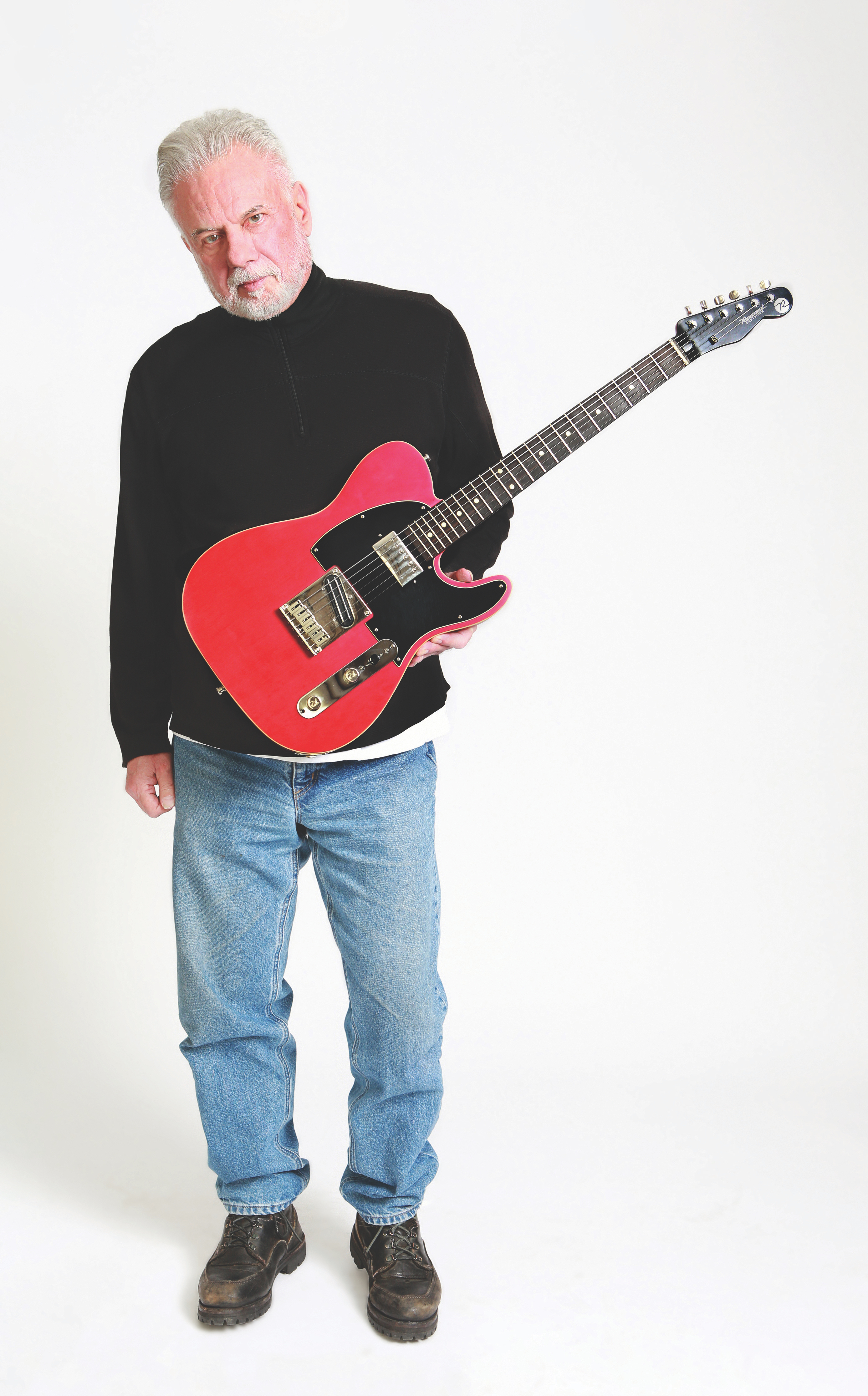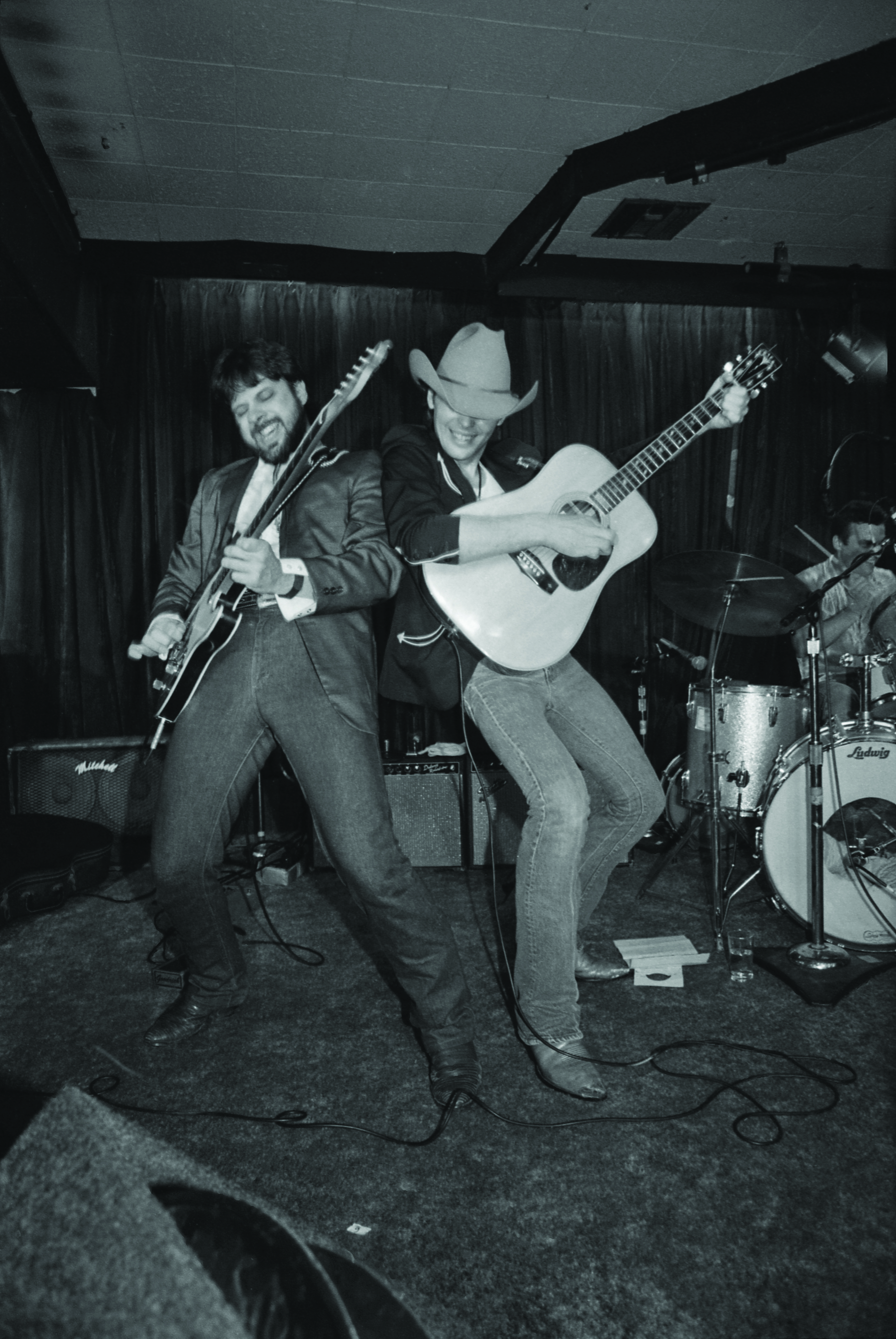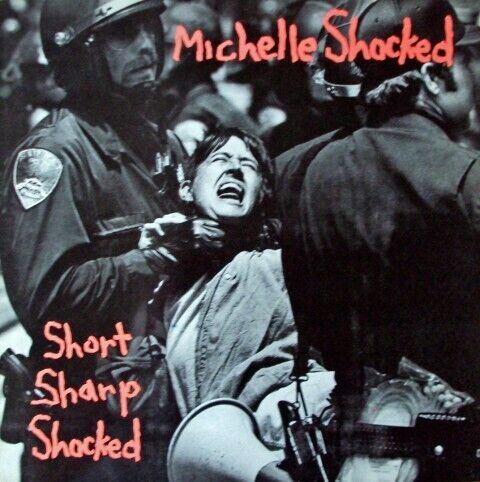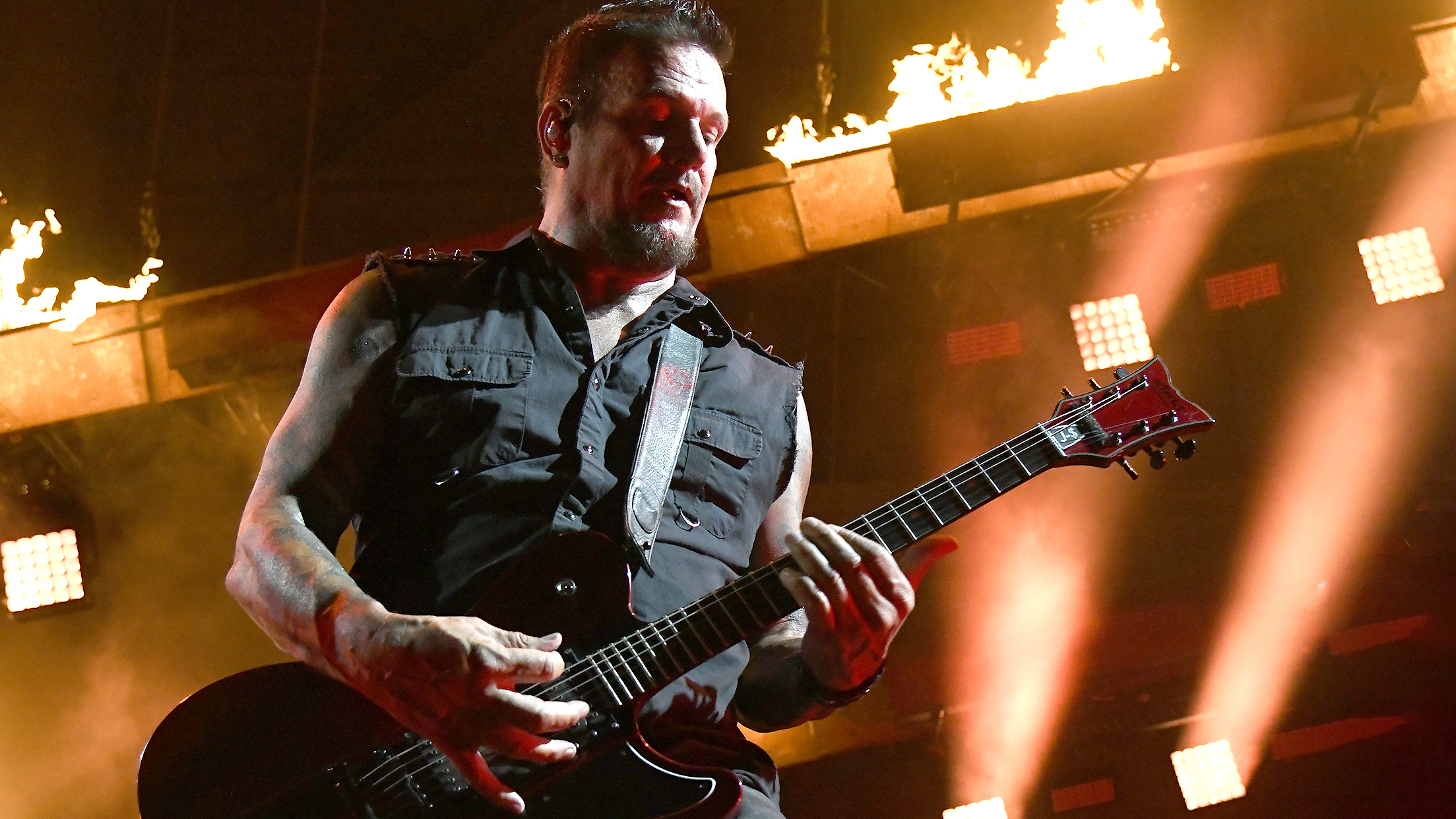“My version of 'Fire' attracted some attention. I tried to imagine how Muddy Waters would have played it… Hell, I’m not going to compete with Jimi Hendrix!” Pete Anderson charts his career in five songs
From Dwight Yoakam to Michelle Shocked — Pete Anderson picks the tunes that put him on the map.

Pete Anderson made his name as a hotshot Telemaster and successful producer with Dwight Yoakam when their first album, Guitars, Cadillacs, Etc., Etc., became a double-Platinum smash in 1986. The pair had been working together for two years, finding success with new-wave audiences and roots fans alike, helped by opening slots for the likes of the Blasters and Los Lobos.
Yoakam’s back-to-basics approach eschewed all the trappings that country had fallen into by the 1980s. He was looking back at the golden age of the honky-tonks, taking the Bakersfield vibe from Buck Owens and supercharging it with the punch and drive of the new-wave bands he’d been supporting. A huge part of Yoakam’s success was down to the mind-bending skills of Anderson, who took the art of country guitar to places never before imagined, with solos that seemed to defy all the conventions of the genre, and yet made perfect sense.
Yoakam and Anderson parted ways in 2002 on terms that Anderson says were less than ideal. “He made a movie around 2000 because he was determined to direct and star in it, and it was very costly,” the guitarist explains. That film was South of Heaven, West of Hell.
“As a result, he needed to trim down his touring expenses, which meant that the band had to take a big cut in pay. I wasn’t super happy with the way that it ended, because I’d been there for over 20 years, but it all worked out okay in the end. I got to concentrate on doing other things that I hadn’t done before, and I can’t imagine that I could’ve carried on stuffing myself into a tight pair of jeans and putting cowboy boots on, getting the gig bag and flying to North Dakota to play the Indian casino or whatever.”
With that said, Anderson says he has fond memories of his time with Yoakam.
“I remember looking back at the end of my tenure when I was working on the [2002] box set, Reprise, Please Baby, and I was taken aback a little,” he says. “I thought, My god, that’s a lot of music, and I was responsible for every note as the producer, the guitarist and the bandleader. I just felt amazed to actually look back at how much we did. I’m really proud of it. Whenever I listen to it, I think what we did sounded so good.”
Anderson’s most recent project has been his new book, How to Produce a Record: A Player’s Philosophy for Making a Great Record, which, as the title suggests, gives you all you need — besides talent and some great songs — to deliver pro-sounding recordings. Unsurprisingly, the focus is on the digital process. As someone who came through studios in the analog age, Anderson feels no misplaced nostalgia for the old days.
“Everything that the digital world makes super convenient to do was being done back in the analog age, but engineers were finding those processes really cumbersome,” he explains. “They were crying out for something to simplify the technical processes of recording. There was nothing like the ease of pushing a button that digital technology gives you. It’s kinda like, ‘Do you like reading by candlelight now that you’ve got a light on your table?’ I definitely like the light better. You’re not going to stop technology, and I think it’s foolish to go against it.”

These days, Anderson’s solo albums feature much more blues and jazz than country, and his choice of instruments reflects his change in musical direction.
“I pretty much play all my signature Reverends,” he says. “My PA-1, which is semihollow, is probably my number one go-to guitar. There’s a new model that’s coming soon that’s what I imagined a Fender version of Gibson ES-335 would be like. It has an ebony fingerboard and a Gibson scale length, humbuckers and a maple veneer on the top of the body in cherry red. In essence, though, it’s a very jazzy, bluesy Tele. It’s got a ton of sustain because the neck is set into the body.”
If you're going to do a cover, you might as well take it somewhere entirely different
Playing-wise, Anderson is constantly looking for ways to expand his musical vocabulary. “I play guitar every day without fail. I have my own curriculum to try to expand my playing. I’m really pretty much bored with linear playing.
I listen to a lot of Sinatra’s greatest hits and focus on what the horn section is doing. I’m trying to absorb those complex chords that they’re playing. I’m trying to find places in my own music where I can use those ideas and incorporate complex harmonies and chordal work, like moving the chords around with dominant, diminished and augmented chords.”
Anderson is relentlessly self-analytical about his playing, even though, for the average player, his licks seem almost impossible to replicate. “When I’m playing my own music at a show, I will grade myself on my solos at the end of the night,” he reveals. “Some nights are definitely better than others. If I’m well rested, got plenty of energy and don’t have gear problems, there’s a good chance I can make myself happy and score in the high 80s or even the low 90s.”
Here he reflects on five of his recorded performances that scored a perfect 100.
1. “1,000 Miles From Nowhere" – Dwight Yoakam, This Time (1983)
“This is a favorite song of mine, because Dwight used a fairly common chord progression that’s been used a thousand times, so I was really wondering what I could do with it. I think it’s possibly the only song that I played two guitars on: I put a slide part on there as well as in the intro and kind of weaved them together, a little like ‘Layla.’ I was Eric Clapton and Duane Allman.
“I think it sounds pretty majestic and melodic. I still love how it sounds. I think I came up with a great slide part that really took things to another level. I never actually worked out my solo for this, or for anything really. I would catalog things in my mind — positions or areas that I thought worked when we were in rehearsal — so that when it came time to lay down the solo, I’d have a pretty good idea of what would work well, melodically. I did often like to find an unusual starting point for a solo and take it, but this is a much more melodic, in-the-pocket solo.

“A lot of times, as I was producing, I’d know the melody so well that I’d hear it in
my head as I was playing and I’d be working around it and against it. There’s always a couple of notes that are going to stand out, especially in country music. When you go to the V chord and play a major seventh in that key, it’s very powerful. It’s the third of the V, but it’s a major seven. I hear that note and the sweet tone of the sixth, and that usually gives me a flavor of where I want to go in my head. I try to work off those few notes that are really unusual.”
2. “Guitars, Cadillacs" – Dwight Yoakam, Guitars, Cadillacs, Etc., Etc. (1986)
“This is the first thing I did where I got some notoriety. It was for the second solo. It put me on the map and started people talking about the style of guitar that I was playing. I put in a few pedal-steel licks and a nice sixth lick. There hadn’t been many things recorded like that at that time. I’m certainly not saying that I was the first to do it, of course — Phil Baugh was a really amazing guitarist who had done a lot with steel-guitar licks on a regular guitar. But this song was a big hit, so a lot of people got to hear it on the radio and wondered what the heck that guitar was doing.
“The first solo is pretty restrained, I was channeling Don Rich from Buck Owens’ band there. He was a unique guitarist and also a really great harmony singer, incidentally. He played country more like a blues guy. For the second solo, I knew I might be able to sneak in what I’d been doing in the bars for all those years. It was just a ’56 refinished Tele with a maple neck; the guitar was red metalflake. It looked like a guitar you’d play if you were in Little Richard’s band in the ’50s. [laughs] The amp was a blackface Fender Deluxe.”
3. "If Love Was A Train" – Michelle Shocked, Short Sharp Shocked (1988)

“I was the producer on this one, and it did really well. The record was kind of explosive at the time. It was a real crossover album as it did well in the U.K. and in America. ‘Anchorage’ was a great song on there that made a lot of noise for Michelle. It was a Gold record, which was great to have under my belt. It was an opportunity that I didn’t expect to get.
“This song gave me a chance to play in a way that I wasn’t really known for at that time. Although I’d been playing blues for many years, I’d never recorded anything in that style. I used a capo and played way up the neck, like Albert Collins. I think it shows that great music can cross boundaries. Just as Dwight took his honky-tonk country to punk audiences, Michelle took her own unique roots blend all around the world.”
4. "Our Day Will Come" – Pete Anderson, Working Class (1994)
“When I recorded this album, I set out to record an instrumental that everybody knew. I’d thought of doing ‘Sleepwalk,’ where everybody would know the melody, and I thought maybe I could do ‘Our Day Will Come’ in a similar style. After I’d recorded it and was playing it live, I realized that the people I was playing it for probably weren’t even born when it was a hit and didn’t recognize the song at all!
“At that time, this song was almost like a menu of the things that I could do — every trick lick that I could do was on there. My version of ‘Fire’ by Jimi Hendrix on this album attracted some attention. I tried to imagine how Muddy Waters would have played it, because if you’re going do a cover you might as well take it somewhere entirely different. Hell, I’m not going to compete with Jimi Hendrix.”
5. "Wes Side Blues" – Pete Anderson, Even Things Up (2011)
“It’s difficult to play octaves and get away with it. I’m a big fan of Wes Montgomery, both his playing and his compositional abilities. Of course, I love his octave playing, but I also really like his single-line playing, because it’s so melodic. He never played over people’s heads, and I think part of the reason for his popular appeal is that the average guy on the street didn’t have to be a jazz aficionado to get him. They could just like the sound.
“I chose this song because, after I left Dwight, I thought about the direction that
I wanted to go as a player, and this song was very much what I wanted to head toward. I remember thinking that I’ve got a vehicle — the song — and a style that I’ve been working on in my head for years, using chords that were a little more complex and playing outside notes. I think if someone was a fan of my playing, then this was a good Pete Anderson calling card. The guitar for this one was an Epiphone Joe Pass model, which isn’t a great guitar, actually. I think the amp was a Fender blackface twin.”
Get The Pick Newsletter
All the latest guitar news, interviews, lessons, reviews, deals and more, direct to your inbox!
Mark is a freelance writer with particular expertise in the fields of ‘70s glam, punk, rockabilly and classic ‘50s rock and roll. He sings and plays guitar in his own musical project, Star Studded Sham, which has been described as sounding like the hits of T. Rex and Slade as played by Johnny Thunders. He had several indie hits with his band, Private Sector and has worked with a host of UK punk luminaries. Mark also presents themed radio shows for Generating Steam Heat. He has just completed his first novel, The Bulletproof Truth, and is currently working on the sequel.
“I was home with the family and I got a phone call saying, 'You've won a Grammy.' We were like, 'You've got to be kidding?'” Martin Barre recalls Jethro Tull’s famous Grammy triumph over Metallica 36 years on
“F****d me up completely. I couldn’t make head or tail of it.” Eric Clapton on the one guitarist who blew him away onstage












